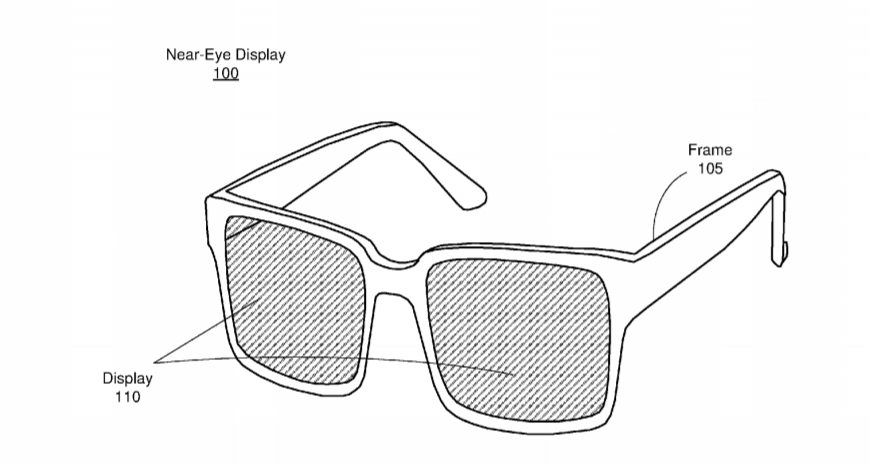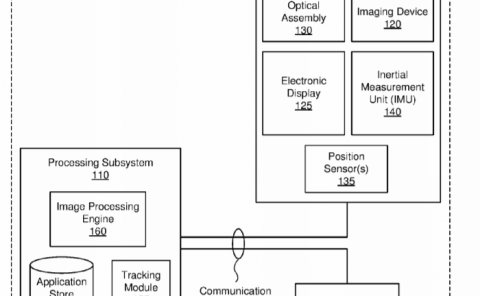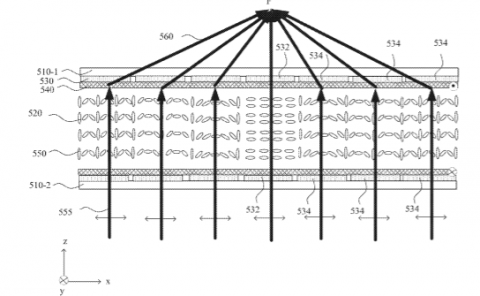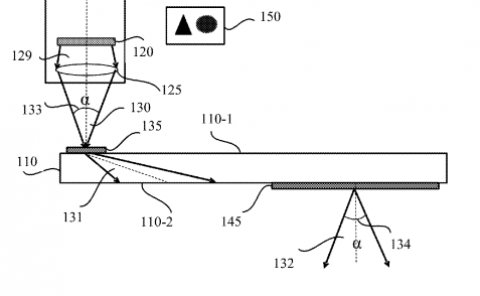Oculus Patent | Light emitter architecture for scanning display device
Patent: Light emitter architecture for scanning display device
Publication Number: 20190020858
Publication Date: 2019-01-17
Applicants: Oculus

Abstract
A scanning type display device includes a light source that includes multiple rows and columns of light emitters. The display device also includes a rotatable mirror that projects light to different areas of an image field as the mirror rotates. There can be a redundant number to light emitters in the light source to increase the brightness of the pixels in the image field. A data driver may replicate and shift data values among light emitters of the same columns. The light emitters may operate in conjunction with the mirror in a synchronized manner. Owing to the shift in data value and the rotation of the mirror, the mirror may first project light from a first light emitter to a pixel and may then project light from a second light emitter with the same brightness level to the same pixel. The shifting may continue for additional light emitters.
Background
This disclosure relates to structure and operation of a display device and more specifically to shifting of data signals to different light sources in a scan-type display device.
In a full-color display device, three different color (Red (R), Green (G), Blue (B)) light emitters are placed on a silicon substrate. To control the light emitters, conventionally, a dedicated line is used to connect each light emitter to a controller. Such configuration requires a large number of lines to connect all light emitters for a high-resolution display device.
Active matrix is one way of addressing this issue by having light emitters controlled by multiplexing signals. Light emitters of each row in the active matrix have a switch transistor and all the switches of the same row are controlled by the same signal (i.e., a scan signal). At the same time, the three RGB light emitters of the same column also share the same IC data output. Hence, during each time, first Red light emitters are selected by a Red scan signal and all Red light emitters are programmed simultaneously. The Green row and the Blue row are then selected sequentially. In this way, the number of lines for addressing the light emitters can be reduced. However, since the emitting time of each light emitter is usually a portion of a period of time, the frequency and the driving current for each light emitter have to be multiple times higher than direct addressing in order to obtain the same brightness.
Summary
Embodiments described herein generally relate to a scanning type display device with multiple rows and columns of individual light emitters that receive data signals that are shifted in a synchronized manner so that light from different light emitters with a specific brightness level is projected to a pixel within an image frame. Two or more rows of light emitters are provided for each color (R, G, or B). The display device includes a rotatable mirror that projects emitted light to an image field. As the mirror rotates, light is projected to different areas of the image field. As the light completes scanning of the image field, an image is formed on the image field. During a cycle of the mirror rotation, a pixel in the image field is illuminated by light emitters of the same color as well as light emitters of different colors. The overall color value of a given pixel is, thus, a temporal average of the light projected to the pixel.
In accordance with an embodiment, a data shift technique is used to operate multiple light emitters in a column. A display device may include a data driver that provides data signals to light emitters to control the brightness levels at which the light emitters operate. The display device loads data values into the data driver. In turn, the data driver sends a data signal representing a data value to a first light emitter in the column. As such, the first light emitter operates at a brightness level according to the data signal in a first portion of a frame period. The data driver then shifts the data signal to a second light emitter in the same column so that the second light emitter operates at the same brightness level according to the shifted data signal in the second portion of the frame period.
This operation of the light emitters may be synchronized with the rotation of the mirror that projects light to the image field. In the first portion of the frame period, the mirror can be rotated to a first position to project light emitted from the first light emitter to a pixel of the image field. In the second portion of the frame period, the mirror can be rotated to a second position to project light emitted from the second light emitter to the same pixel that was illuminated by the first light emitter in the first portion of the frame period. The light projected to the pixel in the first portion of the frame period and the light projected to the pixel in the second portion of the frame period may have the same brightness level due to the shift in data signals. As such, the pixel is illuminated two or more times within a frame period so that the brightness of the display device is increased.



